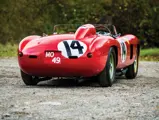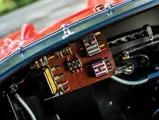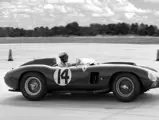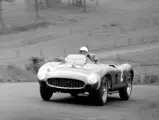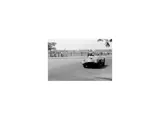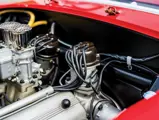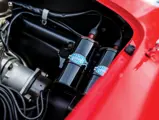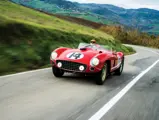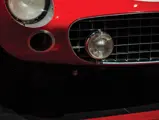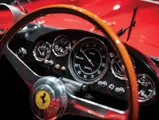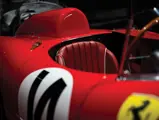
1956 Ferrari 290 MM by Scaglietti
{{lr.item.text}}
$22,005,000 USD | Sold
{{bidding.lot.reserveStatusFormatted}}
- Raced as an official Scuderia Ferrari Works car for the 1956 and 1957 seasons
- Piloted by an amazing collection of the world’s best drivers
- Podium finishes at the Mille Miglia and 1000 KM of Buenos Aires as a Scuderia Ferrari team car
- Overall victory at the Nassau Trophy and Memorial race with Stirling Moss
- The final of four examples built and among only three surviving examples
- Supremely eligible for the world’s greatest classic car events
- Retained by the Chinetti family for nearly three decades
- Beautifully restored by Ferrari Classiche to its 1957 12 Hours of Sebring livery
- Ferrari Classiche certified; matching-numbers engine, gearbox, and original body
In the mid-1950s, Scuderia Ferrari was a force to be reckoned with. After Mercedes-Benz’s departure from international motorsport following the 1955 Le Mans disaster, Ferrari’s path to victory was clear for Il Commendatore. His drivers and cars were ready to cement Ferrari’s reputation in the history books. Only Maserati stood in his way.
Within the hierarchy of Enzo-era Ferraris, the sports racing barchettas of the mid-1950s are amongst the most significant cars to wear the Cavallino Rampante. The Works-campaigned examples are especially significant, as they often finished at the front of the pack at the most grueling races, piloted by the most talented drivers.
Chassis no. 0628 is no exception to the rule. It boasts an enviable racing history on three continents with many of the greatest drivers of its decade.
FERRARI SWEEPS THE 1956 MILLE MIGLIA
At the time, Ferrari was experimenting with different engine layouts utilizing the same displacement in order to assess the efficiency of engines boasting greater torque versus engines producing their power at high rpms. Hence the 2.0-liter 500 Mondial, the 3.0-liter 750 Monza, and the 3.5-liter 860 Monza came to be, in addition to the six-cylinder, 4.4-liter Tipo 118 and 121 LM. Scuderia Ferrari was usually entering three to four cars in each important race on the calendar, all with slightly different specifications, engine layouts, and various other trade secrets and innovations in order to distribute the team’s risk and ensure success.
Chassis 0628 began life in early 1956 with a four-cylinder 860 Monza engine utilizing Ferrari’s new Tipo 520 chassis. Built specifically as a Scuderia Ferrari Works car, its first outing would be one of the world’s most significant motor racing spectacles: the Mille Miglia.
Peter Collins was assigned to 0628. Collins’ copilot was the famous motorsport photographer Louis Klemantaski, who captured an incredible array of images from the race giving the public an idea of what the Mille Miglia was like from a driver’s perspective. Wearing #551 and a green stripe across its nose, Klemantaski’s photographs of 0628 at all stages of the race help to humanize the event, showcasing the masses that came out to cheer on the brave racers and beautiful cars, in addition to showing Collins himself throughout the event. Four entries from Scuderia Ferrari were present at the event. In addition to 0628 with Collins and Klemantaski, Juan Manuel Fangio piloted #600 290 MM (chassis 0626), Eugenio Castelotti drove #548 290 MM (chassis 0616), and Luigi Musso was in #556 860 Monza (chassis 0602).
Racing off the starting ramp three minutes after Castelotti, Collins and Klemantaski rocketed out of Brescia and through the Italian countryside for what would become a particularly intense race through a downpour. At the end of the day, Ferrari claimed the top five places, with Collins and Klemantaski 2nd behind Castelotti and in front of Musso and Fangio, as well as Olivier Gendenbien and Jacques Washier in a 250 GT LWB Berlinetta, making for one of the most memorable outings at the Mille Miglia for the Scuderia.
The next race on the calendar was the 2nd International ADAC 1000 KM at the Nürburgring. Alfonso de Portago and Gendebien were assigned to 0628 wearing #2, but the pair failed to finish after an accident that damaged the nose of the car. Returning to Italy for its next event, the Targa Florio, Gendenbien would once again be behind the wheel, joined by Hans Herrmann, and the pair finishing 4th overall. Further success for 0628 was found at both the Coppa d’Oro Delle Dolomiti, driven by Gendenbien and Jacques Washer, and the Aosta-Gran San Bernardo hill climb with Umberto Maglioli behind the wheel. At both events, 0628 crossed the line finishing 2nd overall as well as 1st in class at the Coppa d’Oro Dolomiti. For its final race of 1956, 0628 was piloted by Juan Manuel Fangio and Eugenio Castellotti at the Swedish Grand Prix, but unfortunately the pair failed to finish due to engine problems.
TWELVE CYLINDERS FOR 1957
Following the Swedish Grand Prix, 0628 was returned to Maranello where it was upgraded with a Tipo 136, 290 S engine with double overhead camshafts for the first race of the 1957 season, the 1000 KM of Buenos Aires. Prior to the car’s most recent restoration at Ferrari Classiche, evidence of this change was still visible on the front lower crossmember of the chassis. Such upgrades were frequently done at the time, as the Tipo 520 chassis was the underlying platform for the 860 Monza, the 290 Sport, and the 290 MM. Both the 290 MM V-12 and four-cylinder found in the 860 Monza boasted a 3.5-liter displacement and as a result, modifications were necessary, but minimal, to make a V-12 engine fit where a four-cylinder once resided.
After being shipped to Argentina, 0628 was designated #8 for the 1000 KM of Buenos Aires, the car was assigned to Alfonso de Portago, Peter Collins, and Eugenio Castellotti. They would place 3rd overall. In February 1957, the Tipo 136 engine used in Buenos Aires was removed from the car in Maranello, to be upgraded to Tipo 140-specifications and fitted to a 315. Afterwards, 0628 travelled back across the Atlantic for its next event: the 6th annual 12 Hours of Sebring, now fitted with a 290 MM Tipo 130 V-12 with single overhead camshafts as well as a slightly different nose, with polished aluminum air ducts for the brakes. Phil Hill and Wolfgang Von Trips drove 0628 as #14, but unfortunately the car was forced to withdraw on lap 106 due to a battery failure.
POST-SCUDERIA RACING CAREER
Sebring would be 0628’s last race with the Scuderia as in the summer of 1957, the car was sold through Luigi Chinetti to noted NART client Jan de Vroom, in trade for a 500 TRC. De Vroom’s first event with his new twelve-cylinder Ferrari was at the Swedish Grand Prix but resulted in a DNF due to an accident on lap 23. Sent to the factory for repairs after the race, the car was converted to 250 Testa Rossa pontoon-style nose configuration.
After the work was completed, the car was shipped to Nassau for the Bahamas Speed Weeks. Raced by Jan de Vroom in the Governor’s Trophy and associated preliminary race on 6 December, de Vroom and the Ferrari finished a proud 13th overall, but this would all change over the course of the next few days. Through a complex deal which lead to de Vroom selling the car back to Chinetti and subsequently leasing it to Temple Buell. Buell then enlisted the services of Stirling Moss to drive. Moss requested that the central throttle be reverted to the usual layout in advance of his race. Despite Moss having never driven a 290 MM before, both driver and car clearly were a good fit for each other, and Moss handily won both events, leading from the start in the Memorial Trophy.
Following its victorious exploits in the Bahamas, 0628 returned with Chinetti to the States where it was put on display at the 50th Annual Chicago Auto Show in January 1958. Following a podium finish and 1st in class win at Watkins Glen by future Le Mans-winner Dan Gurney, the car was retained by Chinetti for approximately two years before being sold to noted privateer George Reed of Illinois. Owner of RRR Motors (Reed’s Race Rats), Reed campaigned the car in a handful of events over the next year across Wisconsin and Illinois, winning his class on at least three occasions.
The 290 MM’s next owner would be Harley Cluxton III before it was purchased by Luigi Chinetti in 1969. Cluxton’s fascinating recollections of his purchase and brief ownership is mentioned in a letter by him in Cavallino 128. The car was shipped to Chinetti’s facilities in Greenwich, Connecticut, and remained there for nearly 20 years. Removed from storage in 1982, 0628 was subject to a partial restoration by François Sicard, and repainted blue and white to match Chinetti’s colors. Its first outing in public for over two decades was at the 1984 Monterey Historics, where it was driven by Sicard. Travelling back overseas, 0628 then returned to the Mille Miglia in 1988, entered and driven by Chinetti and his son, Luigi Chinetti Jr.
After the Mille Miglia, the car remained in Europe, yet stayed in Chinetti’s ownership, attending several shows during that time. It appeared at a Ferrari Club meeting in Imola in June 1989 and then returned to the Mille Miglia in 1990. It was also shown at the FF40 International Ferrari Concours in Brussles, where it won the Marlboro Award for an Outstanding Competition car. Tragically, Chinetti Sr. passed away in 1994 and the car was inherited by his son. Chinetti Jr. kept 0628 for the next six years prior to being purchased by noted Ferrari collector and former Microsoft executive Jon Shirley in June 1998.
Shirley sent his new 290 MM to Pete Lovely and Butch Dennison of Puyallup, Washington, to be restored, a process that took roughly three years. Chassis no. 0628’s first appearance following the restoration was at the Ferrari Club of America Annual Meeting in Dallas, Texas, in 2001, where it deservedly took Best of Show. A few months later, it graced the 18th fairway at the Pebble Beach Concours d’Elegance, where it not only won its class, but also won the Luigi Chinetti Award, celebrating the best Ferrari on the show field. Featured on the cover of Cavallino 125 later that year, it returned to Monterey in 2002 to be shown at Concorso Italiano, winning Best Ferrari, once again, as well as Best of Show.
Two years later, it was driven by Shirley at the Monterey Historics at Laguna Seca. Shirley’s last major outing with the car was with his son Eric on the Colorado Grand in 2007. In March 2008, 0628 was purchased by Hugh Taylor of Worcestershire and at that point imported to the UK. It remained with him for the following four years and was driven by Taylor at the Goodwood Revival as part of the Tribute to Juan Manual Fangio parade in 2011.
RETURN TO SEBRING SPECIFICATIONS
Upon the current owner’s acquisition of the 290 MM in 2011, it was decided that the car would be certified and fully restored by Ferrari Classiche. With such a colorful racing history in many different configurations and liveries, it was decided that the ideal point in time to return to would be the 1957 12 Hours of Sebring, as this was after its conversion to 290 MM specifications and its final race with Scuderia Ferrari. It was only fitting that the car would return to Maranello for the restoration, where work was overseen and undertaken by Ferrari Classiche. Upon the completion of the work, 0628 was granted Red Book certification by Ferrari Classiche. The Classiche binder itself states that the car maintains its original chassis, the Tipo 130 V-12 fitted to the car by the factory in 1957, its original gearbox, and original body.
After the completion of the restoration in early 2015, the car was shown at the Amelia Island Concours d’Elegance. It was shown once more later that year at Ferrari’s Finali Mondiali at Mugello by Ferrari Classiche, showcasing their restoration efforts and attention to detail. During 2016 and 2017, 0628 was kept in Maranello and put on display in both the Ferrari Museum in Maranello and at the Casa Enzo Ferrari in Modena.
The possibilities for 0628 are limitless for its next custodian. Eligible for virtually any concours event worldwide, it also remains eligible for countless vintage racing events, chief of which would be the Mille Miglia. Furthermore, the original pontoon-style front end also accompanies the car.
The impressive list of drivers that were given a chance to slide behind the wheel of the 290 MM reads like a who’s-who of the finest drivers of the era. Their combined accomplishments are truly astonishing in every sense, and motor racing would not have captured the world’s attention in such a way without their influence and expertise. Of the four 290 MMs built, three have survived, in addition to only two 315 Ses and three 335 Ses, for a total of only eight cars from what can be considered the golden era of the Scuderia Ferrari’s two-seater sports racing barchettas. The seven other cars all remain in significant collections around the world, unlikely to part with their owners anytime soon, making the acquisition of 0628 an unmissable opportunity.
The next owner of this illustrious Ferrari will be afforded the opportunity to add their name to this incredible list as a driver of 0628 in addition to acquiring one of the rarest and most significant Ferrari sports racing cars from the Scuderia’s heyday.





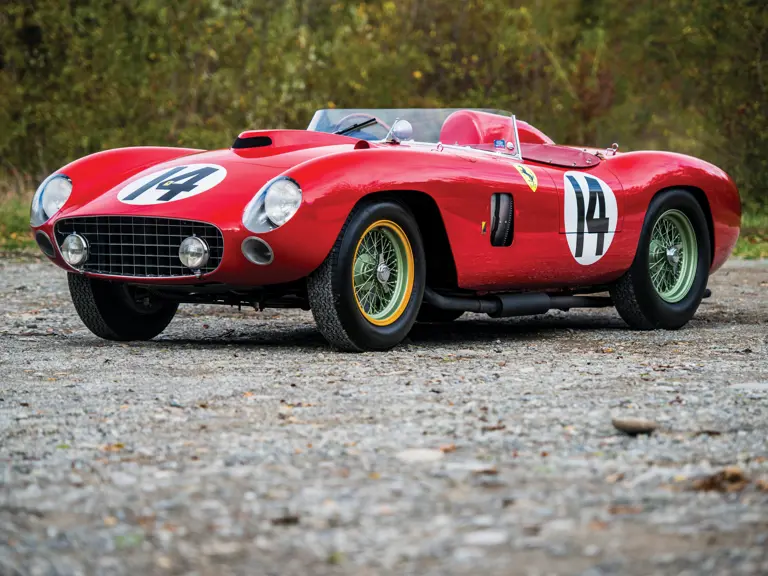









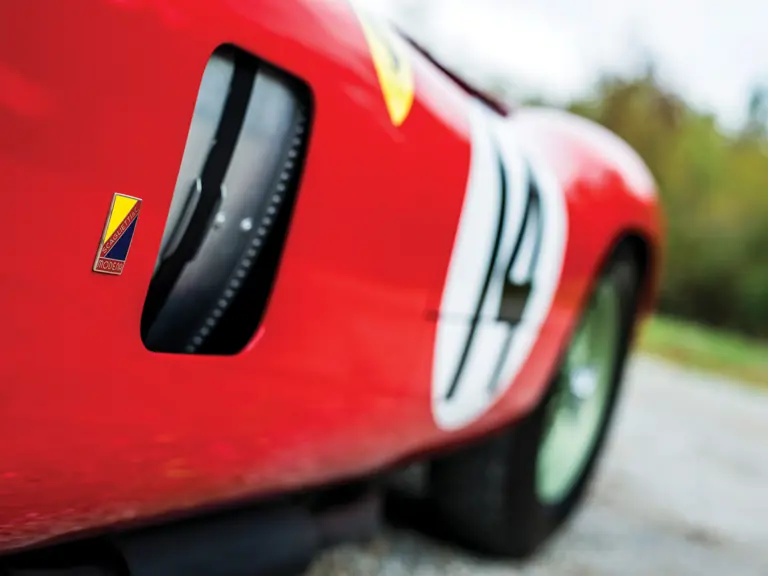




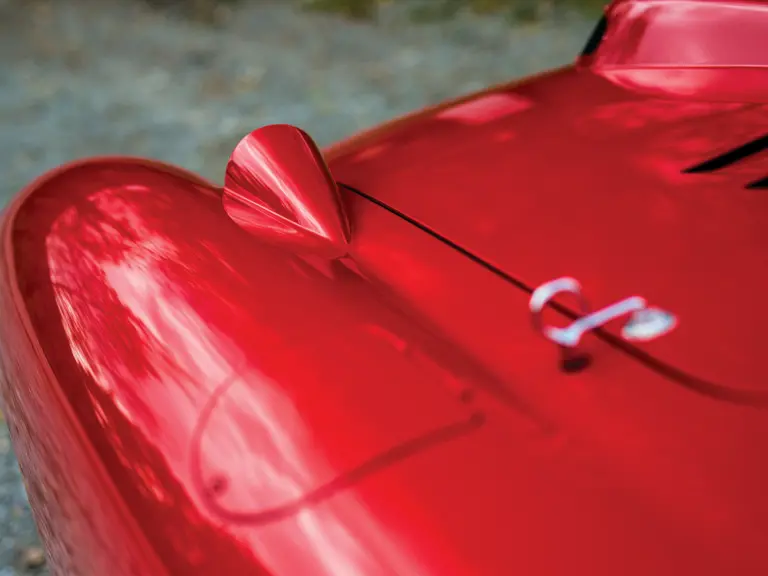
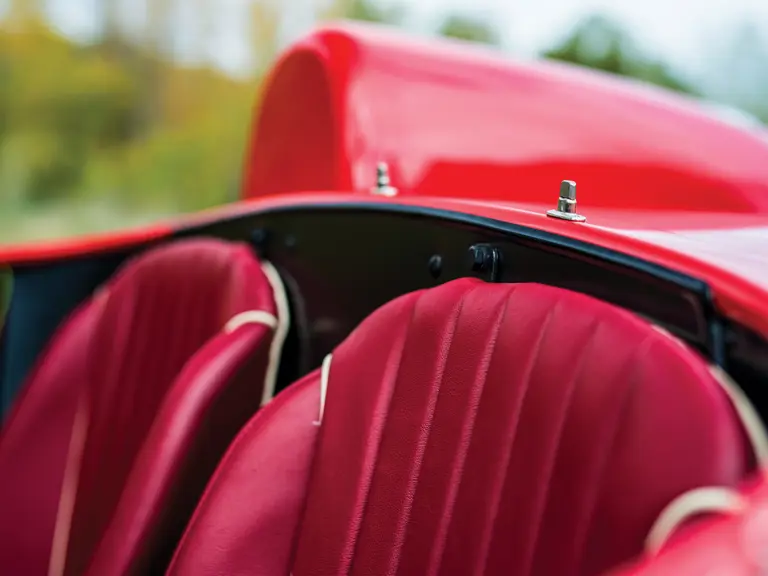





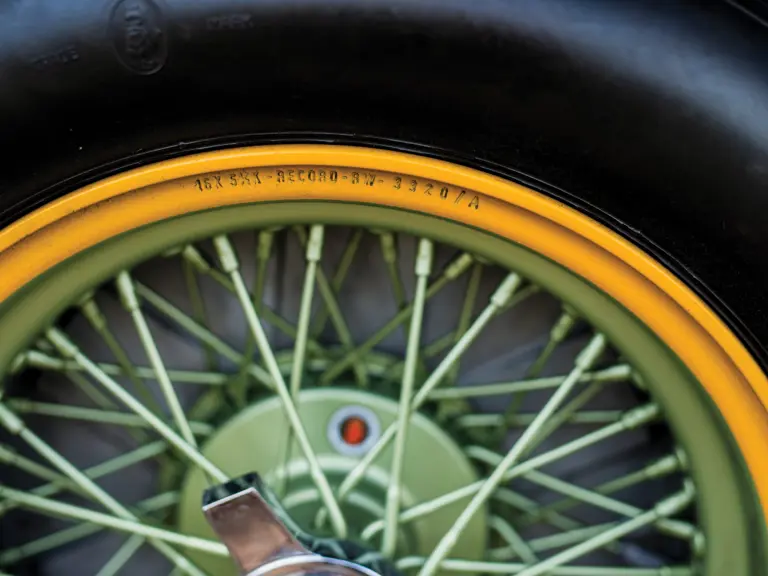












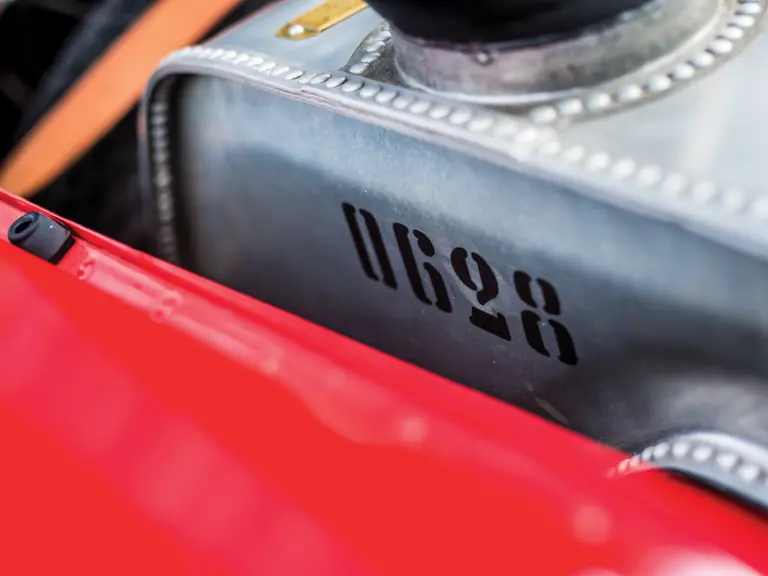



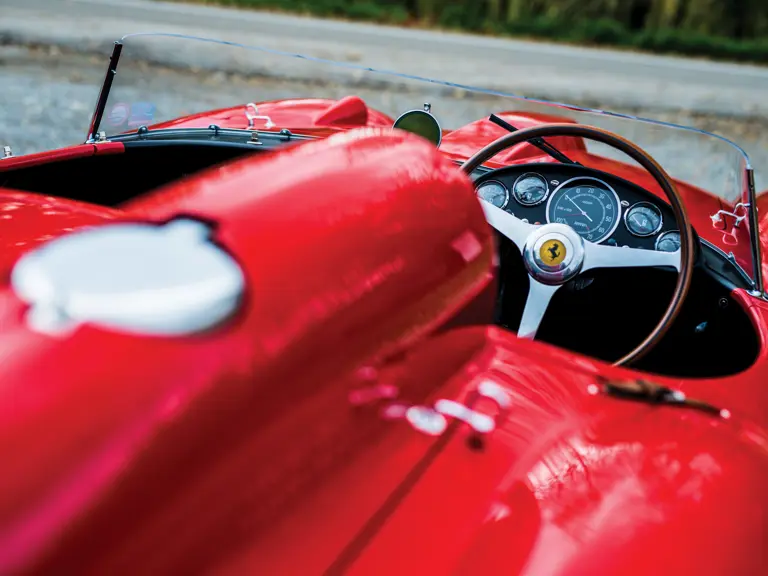






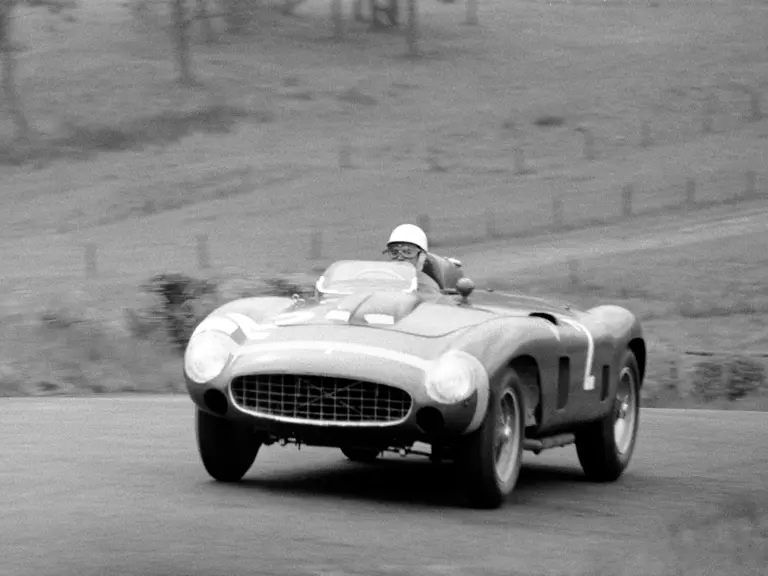










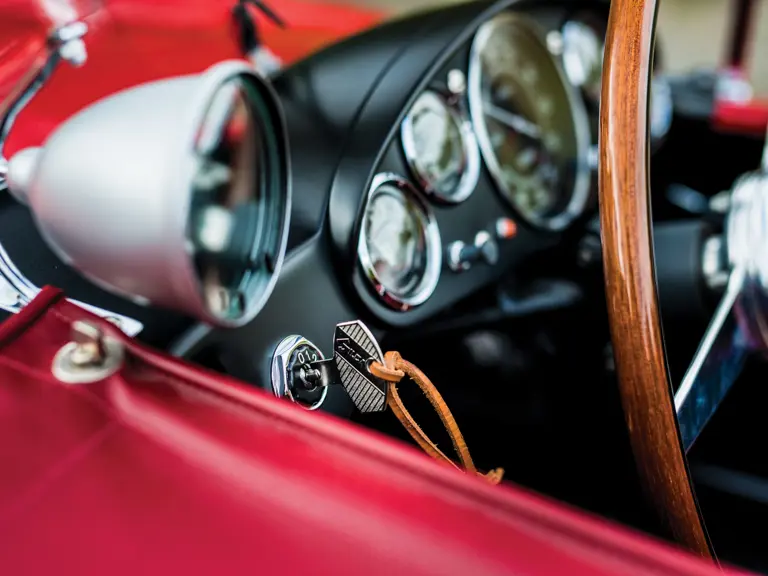





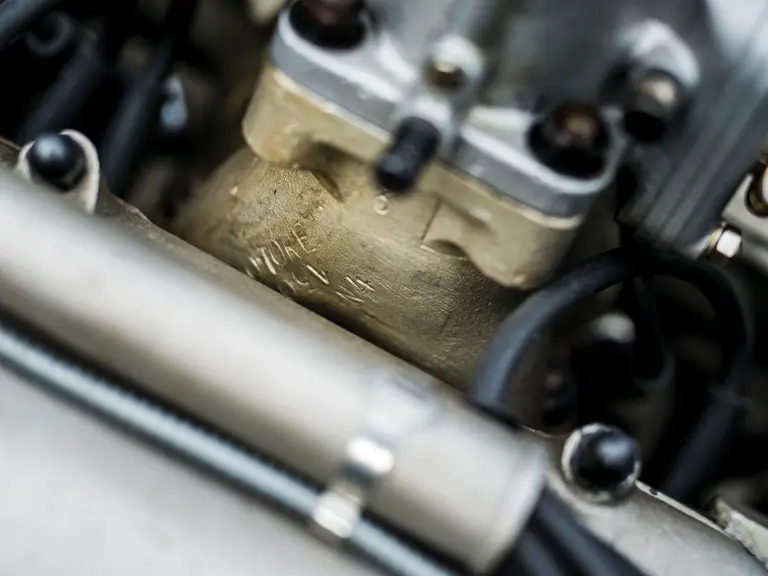






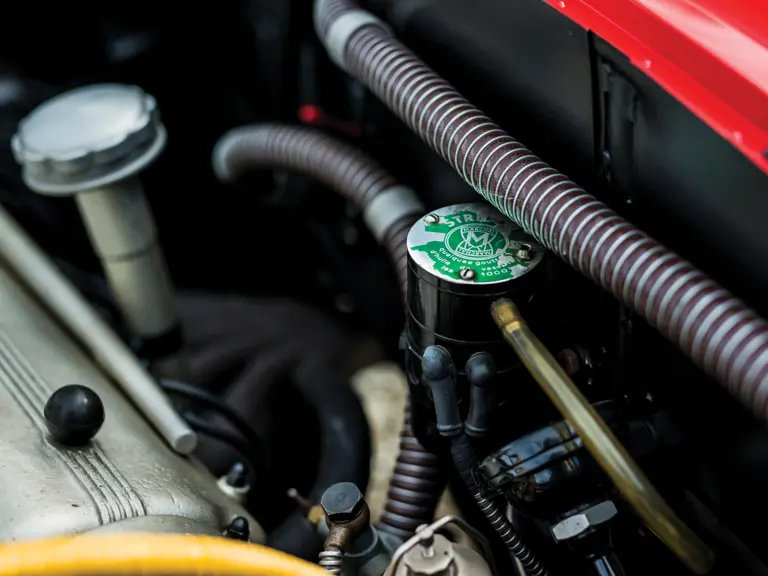







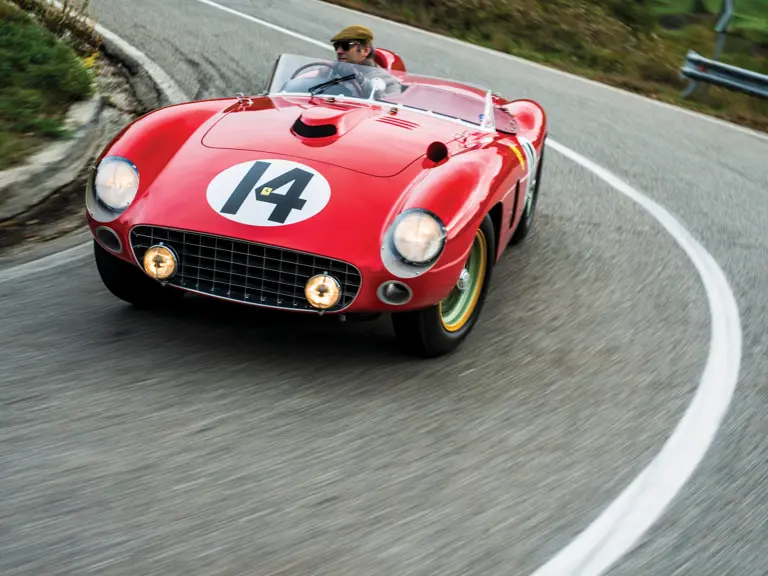















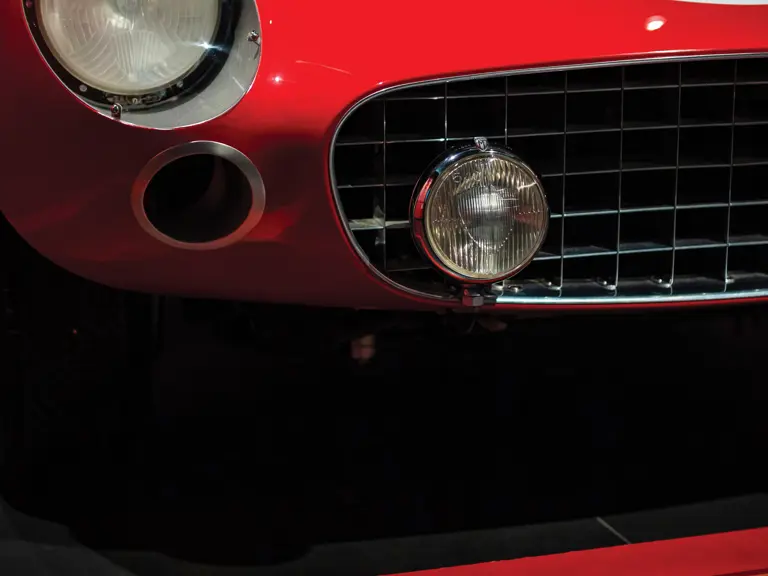






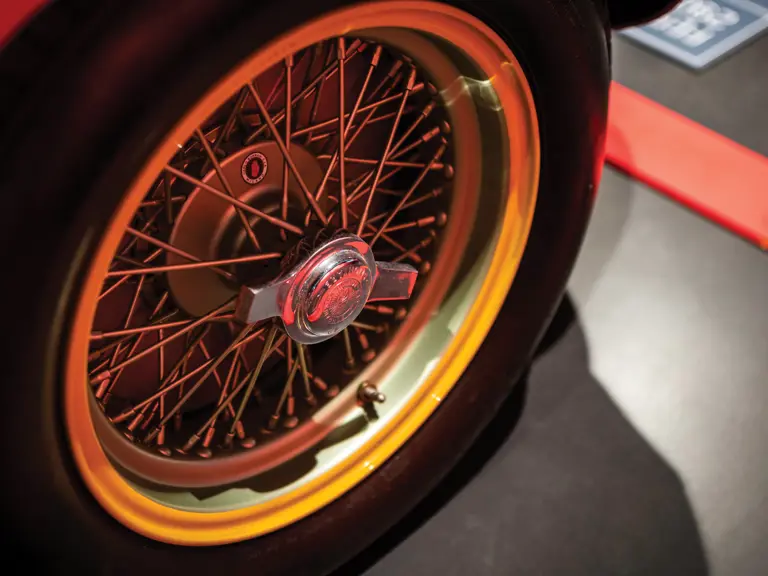


 | Los Angeles, California
| Los Angeles, California






